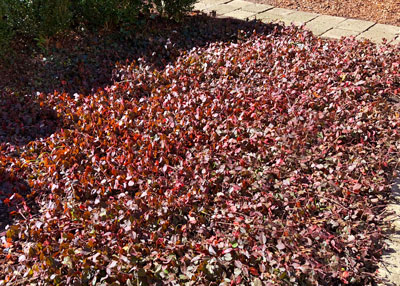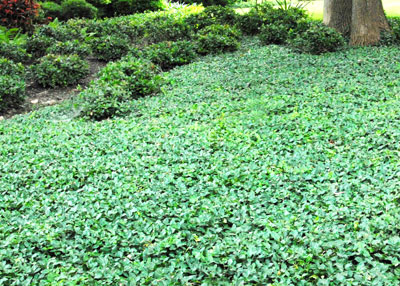Purple Wintercreeper Shows Its Stuff

I bought two flats of this groundcover at a nursery that was known for its unusual plants. That was the early 1980s. My plantings grew famously, and within just a few years I was willing to recommend purple wintercreeper euonymus as a groundcover for Texas. And I did.
As the years have passed, my recommendations have just grown stronger. The plant has never let me down. It has outperformed the very popular Asian jasmine, and now I see commercial landscapers using it in many parts of Texas.
What you need to know…
Here are the basic facts you’ll want to know to succeed.
• Purple wintercreeper euonymus (Euonymus fortunei ‘Coloratus’)
• Trailing, to 6-10 in. tall and 3-4 ft. wide.
• Leaves are lustrous dark green during growing season, turning maroon in winter.

• Plant will clamber through low shrubs, so is best used in open beds or around trees, but not where it can become entangled with low branches, chain link fences, etc.
• Grows well in sun or shade, but requires sun for best winter color.
• Euonymus scale can be a problem, but primarily when plants are allowed to climb. Less so when used as a groundcover. The systemic insecticide Imidacloprid is an effective control.
Getting it growing…
• Start from 4-inch plants set out on 12- or 15-inch centers checkerboard-style. Plant into well-prepared garden soil with generous amounts of organic matter.
• Apply high-N lawn fertilizer to stimulate stem growth and quickest cover. First year the plants normally will just cover the ground. Move stems around as needed to fill the voids.
• Second year the plants will begin to build on themselves and develop depth to the bed. Trim any excessively tall shoots as needed.
• Third and successive years trim off top shoots as needed to keep bed compact.
• New plants can be started from these stem cuttings.
